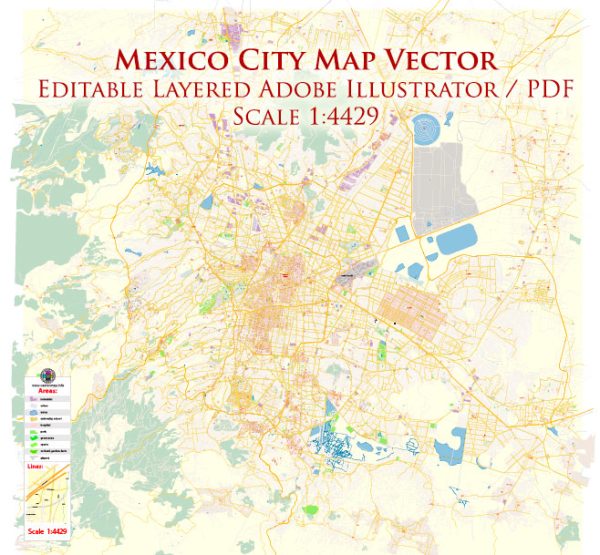Mexico City, the capital and largest city of Mexico, has a rich history of urban development that spans several centuries. The city’s history is a reflection of the complex interplay between indigenous civilizations, Spanish colonial rule, and modern urban challenges. Here is a brief overview of the key stages in Mexico City’s urban development:
Pre-Columbian Era:
- Foundation of Tenochtitlan: The history of Mexico City begins with the foundation of Tenochtitlan by the Mexica (Aztecs) in 1325. Built on an island in the middle of Lake Texcoco, the city-state quickly became the center of the Aztec Empire.
- Chinampas and Causeways: The Aztecs developed advanced agricultural techniques, such as chinampas (artificial islands used for farming), and causeways to connect the island to the mainland.
Spanish Colonial Period:
- Conquest by the Spanish: In 1521, the Spanish under Hernán Cortés conquered Tenochtitlan, marking the beginning of Spanish colonial rule. The city was subsequently rebuilt in a European style.
- Expansion and Influence of Spanish Architecture: Mexico City became the capital of New Spain and experienced significant architectural development, with the construction of churches, palaces, and other colonial structures.
- Destruction of Indigenous Structures: Many indigenous structures were demolished to make way for Spanish-style buildings, including the Templo Mayor, the main Aztec temple.
Post-Independence:
- Mexican War of Independence: Mexico gained its independence from Spanish rule in 1821. The newly formed country faced political and economic challenges that influenced urban development.
- Industrialization and Immigration: The late 19th and early 20th centuries saw industrialization and rural-to-urban migration, leading to rapid population growth. This period witnessed the expansion of the city’s infrastructure and the emergence of new neighborhoods.
20th Century:
- Urbanization and Population Growth: Mexico City continued to grow, experiencing significant urbanization throughout the 20th century. The population explosion led to the development of new residential areas and the expansion of the city’s boundaries.
- Infrastructure Projects: Major infrastructure projects, such as the construction of highways and the city’s subway system, aimed to address the challenges posed by urbanization.
Contemporary Challenges:
- Overpopulation and Urban Sprawl: Mexico City faces challenges related to overpopulation and urban sprawl. The city has expanded beyond its historical limits, leading to issues such as traffic congestion and environmental concerns.
- Air Pollution and Environmental Issues: The rapid urbanization has contributed to air pollution and environmental degradation, prompting efforts to address sustainability and improve public transportation.
Cultural Heritage:
- Preservation of Historic Sites: Efforts have been made to preserve and showcase the city’s rich cultural and historical heritage, including the restoration of the Templo Mayor and the historic center, which is a UNESCO World Heritage site.
In summary, Mexico City’s urban development is a dynamic narrative shaped by a blend of indigenous roots, colonial history, and the challenges of modernization. The city’s evolution reflects its resilience in the face of diverse historical influences.






 Author: Kirill Shrayber, Ph.D.
Author: Kirill Shrayber, Ph.D.